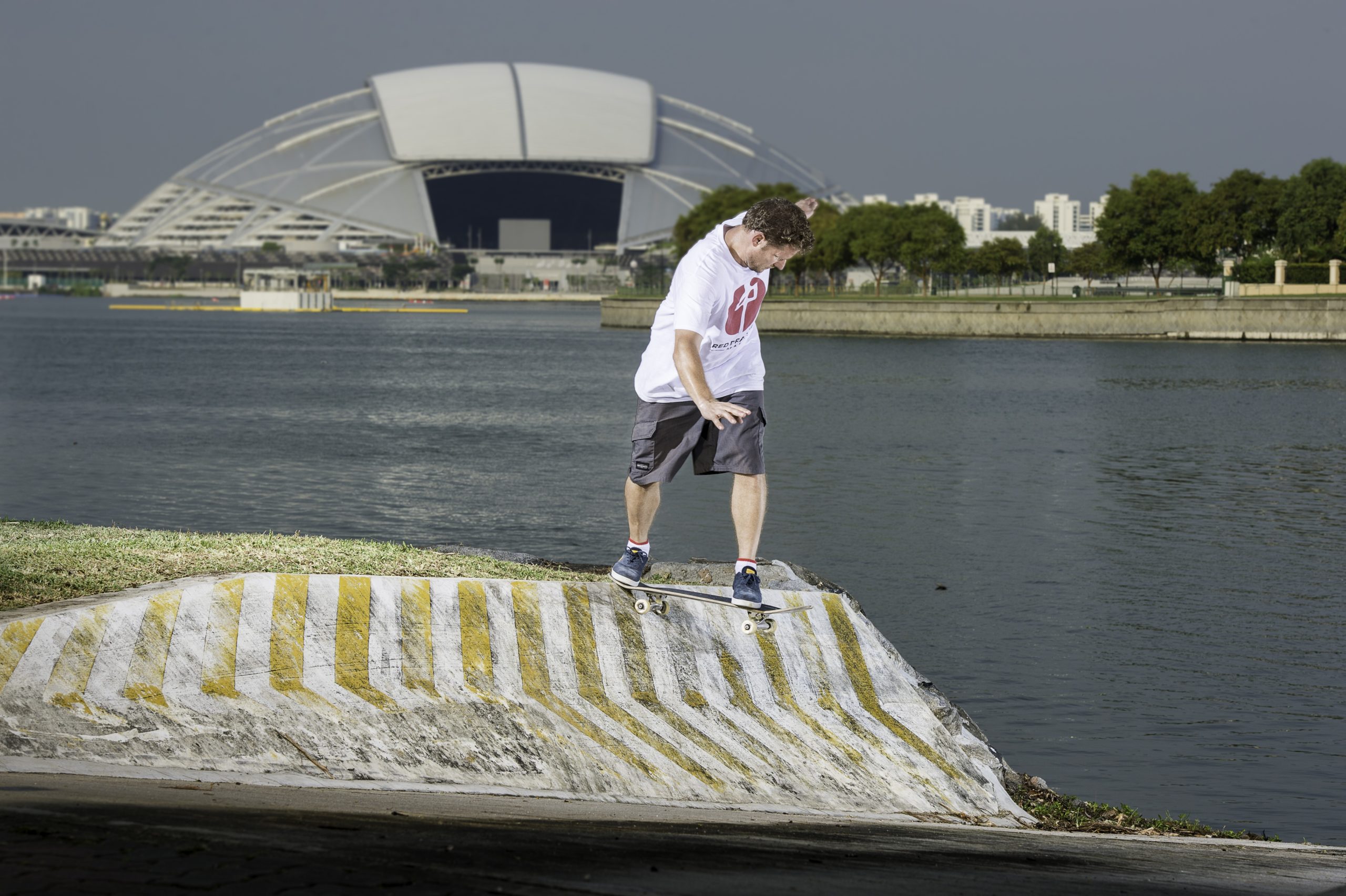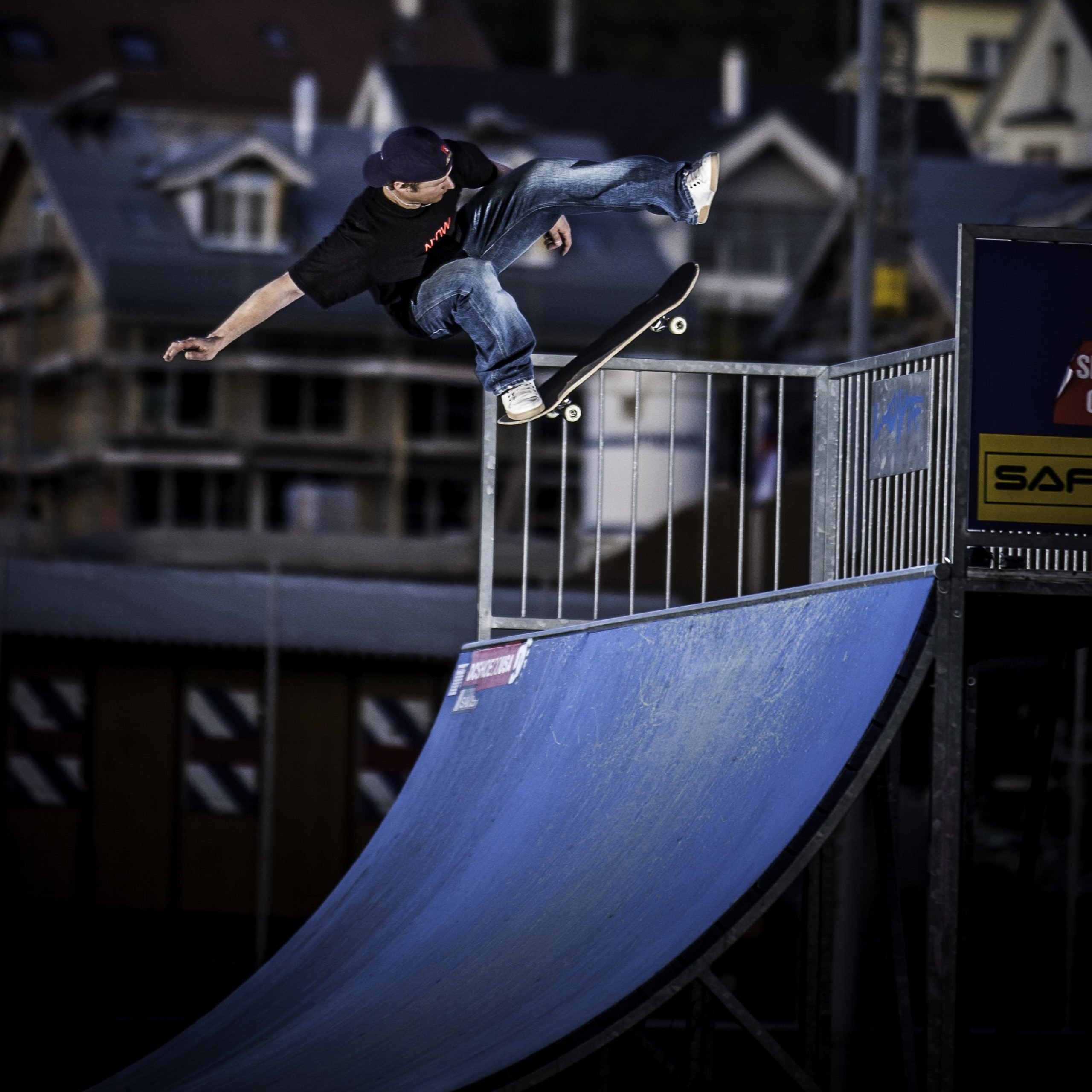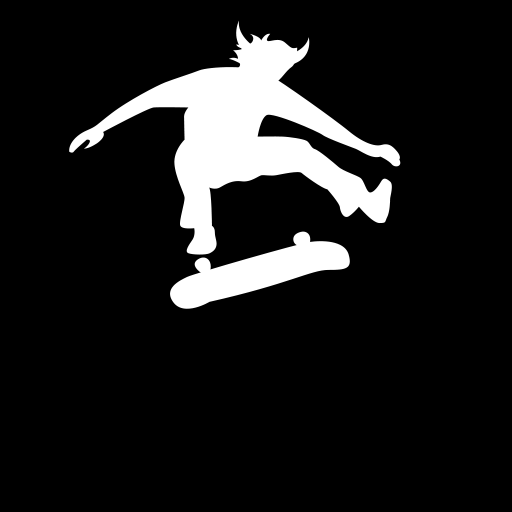Markus ‘Soerfi Schweingruber
June 2021
Boards that mean the world. For nobody this is more true than for Markus Schweingruber aka Sörfi. His whole life so far revolves around skateboarding. Be it as a teenager with his first ollies, established skater with sponsor contracts, Swiss champion, talented photographer, co-owner of a skate shop, distributor up to online retailer. No matter what he touches. It kicks and it flips and he never seems to tire of it. With the love of his life.

So when did you start skateboarding and how did that happen?
It was around 1988 during our family holidays in Croatia. That was the first time I saw skateboarding in real life. A friend of mine from Vienna knew a few tricks. Boneless, FS Ollies and Kickflip. That was so fascinating and I was allowed to try some tricks myself. From that moment on I only wanted to skate.
But it took about 1 year until I could afford a skateboard. To earn a skateboard I worked for 2 weeks at my grandmother’s farm. But to my disappointment she bought me a playcrew toothpick for 49.90. In the following holidays I worked 2 weeks in an electronics company. So I made enough money to buy my first real skateboard when I was 15 years old.
Which one was your first pro model?
I was able to buy my first deckfrom a classmate. It was a Santa Cruz – Jeff Kendall. I never thought that a few years later, I could count Jeff Kendall as one of my friends. The first completely new skateboard I bought at Beach Mountain. It was a Sims, Eric Nash, with Indy Trucks and Cross Bones Wheels.
Santa Cruz Jeff Kendall with the zombie, atomic bomb and the earth? I think I saw that one in the “Streets/Wheels on Fire” videos. However my focus was exclusively on Natas Kaupas back then. How did you meet Jeff?
It was Jeff’s graffiti board. I found another one a few years ago. It is now hanging in my office. I met Jeff at a meeting in England and we got along very well right from the start. Now I visit him once a year in Santa Cruz and we exchange ideas about the development of skateboarding, the skate biz, new online technologies, and family. Jeff has worked his way up from pro skater at Santa Cruz to President and Marketing Director of NHS.
Who became your pro-hero later?
In the early ’90s, my teenage idol was Rick Howard. I never had any other idols. I admire a lot of skaters for their talent, style or creativity, but they were never any idols for me. Some of my all-time favorites are: Louie Barletta, Daewon Song, Chris Haslam, Shane O’Neill, Jerry Hsu.
I never thought that a few years later, I could count Jeff Kendall as one of my friends.

Who sponsored you at the beginning of your career and how far did you finally make it?
My first sponsor was the local skate shop in Winterthur “Beach and Snow”. Airwalk was also one of my first sponsors. Airwalk was the coolest shoe brand on the market at that time. Through Brazil Distribution I got Plan B Stuff. When I was asked by Anthony Carney and Todd Congeliere at a Milk Skateboards Demo, if I wanted to ride directly for Milk Skateboards, I changed to No Way, because those guys did the distribution for Milk Skateboards in Switzerland.
In 1993 this was the reason for my first trip to the USA. We were supposed to film for the Milk Video, which we did. Unfortunately, the video was never released and the footage is probably rotting in some drawer in LA. After that, I was sponsored by Globe and Carhart for a long time. I supported these two brands for years as team manager.
If somebody wants to become a skate pro, what advice would you give him/her?
First finish the apprenticeship or school in Switzerland and then go to America. It is important to have a back-up plan in case the dream does not come true in the States. You have to be aware that only few pro-skaters earn really good money and that the time window is very small where you are interesting for the big sponsors. Then you either have to know the right people, be in the right place at the right time or be really unique. If you get the chance, you have to be ready to leave a lasting impression. The level is extremely high at the moment and there are countless extremely good skaters.

How has SB developed over the last 30 years from your point of view and where is the journey going?
I have experienced so many different kinds of skateboarding in the last 30 years. We started as outcasts, respected by nobody and made fun of from all sides. There were times when it was difficult to find someone who would skate. You could recognize skaters by their shoes. I still remember very well to talk to strangers at the train station, just because they had “Ollie-Marks” on their shoes.
“Cool, you skate, too? Let’s skate together this weekend.” A lot of friendships have developed that way. That was before cell phones, of course. If you didn’t get to the meeting point on time at the weekend, the day was over and you had to skate alone.
When you get older, you’re tempted to say that it was better in the past. I think that is not true. It was just different. Not better and not worse. My personal experience and the feelings I had in this early part of my life were, of course, new and very intense. It was an absolutely fantastic time and I like to think back at that time. But I am convinced that kids who start skating nowadays feel exactly the same fascination and feelings for skating as I did in my time.
“We were supposed to film for the Milk Video,
which we did. Unfortunately, the video was never released
and the footage is probably rotting in some drawer in LA”
Skateboarding is the love of my life and I have lived and loved every era. In my eyes, the most positive change in the development of skateboarding is that we are at a point where skateboarding is absolutely free. I have seen times where within 2 weeks, you were not allowed to do tricks anymore, because they were suddenly not cool anymore, and you had to do other tricks to stay cool. I have the feeling today you are completely free and you can skate the way you love it. Clothing, style, tricks, everything is OK. The main thing is that you skate. That’s the way it has to be. Personally I think it’s great that Tech Street skaters like Yuto Horigome also skate vert really stylish and do fat airs and Mc Twists.
Let’s talk about SigSagSug. For me after No Way and Beach Mountain the skate shop in the region of Zurich. How did it get started?
My 3 partners were all very gifted snowboarders. In Winterthur there was no shop at that time so we opened the skate and snowboard shop “SigSagSug” in 1995.
The VW bus in the shop was a blast. I even got a sticker on my mountain bike. When did you have to close the shop and why?
hahaha… the VW bus was really cool. Many VW Bus fans couldn’t understand why we had to cut it apart to make a changing room out of it. We closed the shop in 2011. In the last couple of years, the market became more and more difficult and we made a lot of mistakes and took wrong decisions. We decided to close the shop while we could still pay all our bills and make a clean exit. Shortly after the closure of SigSagSug, we also decided to close our distribution John Doe Ltd. and all 4 partners went separate ways.

If you could build SigSagSug again, what would you do differently?
Nothing! I’m not the type to regret things and I’m infinitely grateful for everything positive and negative that we have experienced during this time. I personally learned a lot and in the end it brought me to the situation I am in now. I could not be happier.
As I can remember you started taking skate photos relatively early in the mid-90s. You were still full in the skate game back then. Did you start shooting photos before you started skating? How did you actually get into it?
As I can remember you started taking skate photos relatively early in the mid 90s. You were still full in the skate game back then. Did you started shooting photos before you started skating? How did you actually get into it?
Are you still shooting today? Which equipment do you use and what is your setup?
Unfortunately, it’s very hard to find time these days. But if we go on a skate trip, I will bring the whole setup, of course. I have quite an extensive arsenal of good equipment. I always say, if you are a lousy photographer, you need to have great equipment. Nikon camera and Profoto flashes and almost nothing can go wrong.

You developed SKATE.CH. How did it come about and how does the skateboard online business work?
After John Doe Ltd. and SigSagSug I founded my own small skateboard distribution company illUMATE GmbH in early 2012. After SigSagSug I didn’t really want to go back into the end customer market and saw myself clearly as a distributor. I wanted to make it as easy as possible for the skate shops to get the products. The focus was on fair prices, fast delivery times and permanent access to a large stock. I invested a lot in IT to provide the shops with the best possible service.
In the first 2 years, I noticed that unfortunately many shops did not believe in the potential of skateboarding. We tried to do our job as a distributor as good as we could, but if the shop doesn’t buy the goods we have in stock, the kid can’t buy the product in the shop either. More and more often I saw kids wearing some T-shirts of brands we distribute in Switzerland, but I knew that not a single shop in Switzerland had bought this particular T-shirt. So the kids must have ordered the T-shirt online from other countries.
I have always said that it is not my job as a distributor to run an online shop. But since there was no one in Switzerland who was seriously interested in running a professional online skate shop at that time, this task was left to us and we started SKATE.CH.
The goal is still to have the skater buy his stuff in the local skate shop. We will be here with SKATE.CH if the local shop doesn’t have the desired products in stock.
We believe that the skater should have the possibility to buy his stuff in Switzerland and not have to buy from online giants like Skatedeluxe, Bluetomato or Titus. In my opinion, the money should stay in Switzerland so that marketing can be done in Switzerland.

Is it easier or more complicated compared to a brick and mortar skate shop?
Online is much more complex, expensive and complicated than a normal shop. This is totally underestimated. We were too naive in the beginning and thought it would be much easier.
Please give me an example.
For a brick and mortar shop, you need a location and goods and you can get started. For an online shop, you need the entire IT: server, computer, shop software, ERP, domain, various printers… Then you need all the payment functions like credit card, PayPal, Twint, …
When buying by invoice, you need a background credit check that checks the customer live and gives the OK to deliver something to the customer by invoice. All these features have to be built in or programmed and for all of them you need countless contracts and you have to comply with data protection guidelines.
If you are that far, you still don’t have a single item in the shop. To feed the articles correctly into the shop you need photos, product texts, EAN, various attributes, categories…
When everything is in place and the first customer buys a product, you need a logistics solution and all the equipment you need to package and ship a product safely. Local marketing is similar to a stationary shop. Digital marketing is a more complex matter in comparison. SEO, preparing Google data streams, Adwords campaigns, newsletter dispatch, … Holy Molly, when I enumerate it all like this, I only realize how much work we have done in the last 5 years.
“I’m not the type to regret things and I’m infinitely grateful for everything positive and negative that we have experienced during this time.”
What do you think about Skateboarding at the Olympics?
A very difficult topic that is currently widely discussed. The Olympics can have an extremely positive effect on the development of skateboarding infrastructures and institutions, or the acceptance by the general public. That would ultimately be positive for everyone. On the other hand, no one knows exactly how the event will take place and whether skateboarding will be presented in a positive and authentic way or whether skateboarding will be cut
down so that it has little to do with the sport we love so much. How it finally turns out will depend very much on the organization.
In Switzerland, the Swiss Olympic, in my opinion, has unfortunately chosen the wrong organization to represent skateboarding. This had the effect that the Olympic issue was viewed even more critically by all groups of skateboarders. It is unrealistic to expect that every skater is looking forward to the Olympics, but it would have been a chance through a federation accepted by skateboarders to increase the acceptance of the event by Olympic critics and to do the best for skateboarding and the Olympics.
I am a skateboarding fan and whether I see Street League, Tampa Am, X- Games, Olympics, Vans Shop Riot or Sven’s Kiddie Contest, I just want to watch skateboarders pushing their limits and be happy when they land their tricks. I am very happy for all the skaters who are allowed to go to Tokyo and have an unforgettable time there.




